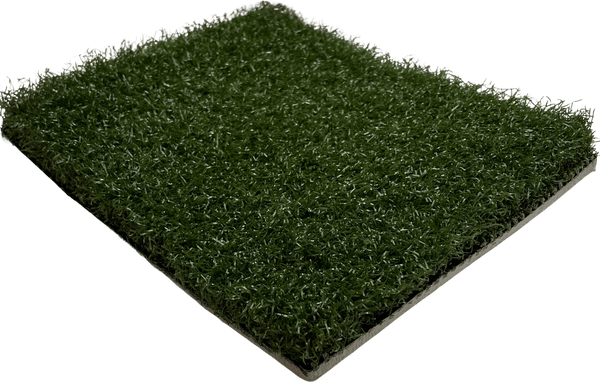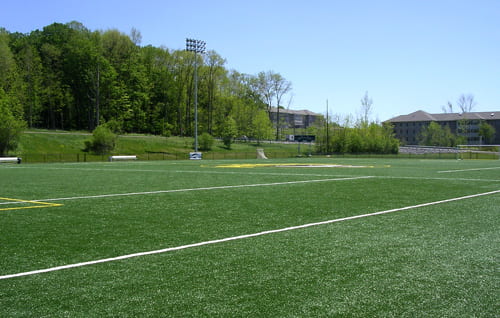Well-Known Phoenix Turf Companies Offering High-End Synthetic Grass Installation
Well-Known Phoenix Turf Companies Offering High-End Synthetic Grass Installation
Blog Article
See Why Homeowners Prefer Synthetic Grass for Sustainable Landscaping Practices
As homeowners progressively focus on sustainability in landscape design, synthetic grass has actually become a compelling choice to conventional turf. Its ability to save water, decrease maintenance initiatives, and decrease ecological effect settings it as a useful selection for those looking for eco-friendly services. The aesthetic allure and convenience of fabricated grass cater to varied style preferences. The implications of this shift expand past mere comfort and looks, triggering a better exam of how these options influence wider environmental end results. What remains to be checked out is the complete range of benefits that fabricated lawn can supply to house owners and the environment alike.
Water Preservation Advantages
One of the most substantial benefits of man-made lawn is its duty in water preservation. In contrast, man-made grass eliminates this demand completely, as it does not need irrigation.
In addition, the installation of artificial turf can add to an extra lasting landscape. House owners can dramatically reduce their water costs, allowing for reallocation of sources to various other environmental initiatives or home uses. Furthermore, synthetic grass is created to stand up to various climatic conditions without the need for supplementary watering, making it a perfect option for regions encountering water shortage.
The environmental advantages prolong past prompt water savings. By decreasing water consumption, synthetic grass aids to minimize the effects of climate modification, preserving crucial ecosystems that are intimidated by excessive water removal. As lasting landscaping practices obtain grip, synthetic grass becomes an accountable option for home owners seeking to develop green outside areas.
Minimized Maintenance Efforts
Synthetic grass substantially minimizes upkeep efforts compared to traditional grass lawns. With artificial grass, home owners can eliminate the time-consuming tasks related to all-natural landscape design, such as mowing, fertilizing, and weeding. This not just conserves beneficial time but also decreases physical labor, making lawn treatment available for individuals of every ages.
Among the most significant advantages is the lack of regular mowing. Traditional grass call for regular trimming to keep an aesthetically pleasing elevation, whereas synthetic lawn stays consistently rich without the need for reducing. In addition, home owners no more require to use fertilizers or chemicals, which are frequently needed to keep all-natural turf healthy and balanced. This shift not just lightens the workload but additionally advertises a neater, much more consistent appearance year-round.
Furthermore, artificial lawn is resilient and durable, calling for minimal upkeep past periodic cleaning and washing to get rid of particles. This simplicity of upkeep permits property owners to appreciate their exterior rooms without the consistent worry of maintenance, offering more time for recreation and household activities. Ultimately, the reduced upkeep efforts related to synthetic grass make it an enticing option for those looking for a low-maintenance, visually appealing landscape.

Environmental Effect Decrease
There is an expanding acknowledgment of the ecological advantages linked with synthetic grass, specifically in terms of water conservation and decreased chemical usage. Typical grass require significant quantities of water, specifically in drought-prone regions, bring about enhanced strain on local water resources. On the other go to these guys hand, artificial turf gets rid of the demand for watering, dramatically lowering water consumption and promoting sustainability.
In addition, conventional grass upkeep commonly entails the application of herbicides, pesticides, and plant foods, which can add to dirt and water pollution. Synthetic grass minimizes this ecological threat by requiring marginal maintenance and essentially removing the demand for damaging chemicals. This not just improves dirt wellness however likewise shields local communities from hazardous drainage.
Moreover, the manufacturing of natural turf lawns generally includes making use of nonrenewable fuel sources for trimming and landscaping devices, further adding to greenhouse gas exhausts. By selecting synthetic grass, house owners can considerably lower their carbon footprint connected with grass care activities.
Visual Charm and Versatility
Along with its ecological advantages, synthetic turf uses considerable aesthetic charm and convenience for landscaping. Homeowners can accomplish a lush, environment-friendly appearance year-round, removing the seasonal changes frequently related to all-natural turf. This regular aesthetic not only improves the aesthetic charm of a residential or commercial property but also adds to a sleek and properly maintained appearance.
Furthermore, fabricated lawn is available in a variety of appearances, designs, and shades, enabling customization to suit specific choices and Homepage layout motifs - Arizona turf. Whether utilized in property yards, commercial rooms, or leisure locations, it can flawlessly incorporate into diverse landscape design layouts, from contemporary minimalist to lavish tropical setups
The versatility of artificial grass extends past plain look; it can be installed in various areas, consisting of roofs, patios, and also interior spaces, producing opportunities for one-of-a-kind landscaping remedies. Furthermore, it appropriates for a variety of tasks, from children's play locations to pet-friendly settings, supplying functionality without endangering design.
Ultimately, the aesthetic allure and flexibility of synthetic grass make it an appealing alternative for house owners seeking lasting landscaping remedies that anchor do not give up beauty for environmental obligation.

Long-Term Price Savings
One of the most compelling advantages of synthetic grass is its capacity for long-lasting cost savings. Unlike natural yard, which needs normal upkeep-- consisting of mowing, watering, fertilizing, and bug control-- fabricated turf significantly lowers these recurring expenditures.
Furthermore, synthetic grass has a life-span of 15 to 25 years, depending on its quality and usage. This toughness reduces replacement costs, making it a more affordable selection in the future. Additionally, the first financial investment in synthetic grass can typically be recouped with the financial savings accrued over time.
While the upfront expense may appear higher compared to sod setup, the advancing savings from reduced maintenance and water usage often outweigh these preliminary expenditures. Inevitably, the fostering of synthetic lawn not just promotes a lasting landscaping remedy yet also supplies house owners a monetarily wise alternative that lines up with long-lasting budgeting objectives.
Conclusion
Synthetic grass emerges as a compelling choice for sustainable landscaping, providing significant benefits in water preservation, decreased maintenance efforts, and diminished ecological effect. Its visual appeal and convenience enhance the visual landscape while lining up with modern-day sustainability objectives. In addition, long-lasting cost savings add to its beauty for homeowners. As areas progressively prioritize environmentally pleasant techniques, the adoption of synthetic lawn stands for a progressive step toward achieving lasting and resilient landscapes.
Furthermore, synthetic lawn is developed to endure different climatic conditions without the requirement for supplemental watering, making it an optimal option for regions dealing with water deficiency. (Artificial turf companies phoenix)

Artificial lawn arises as an engaging choice for sustainable landscape design, providing considerable advantages in water conservation, lowered upkeep initiatives, and lessened environmental impact.
Report this page